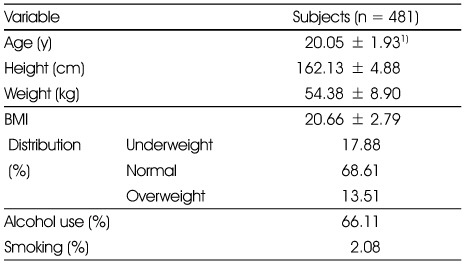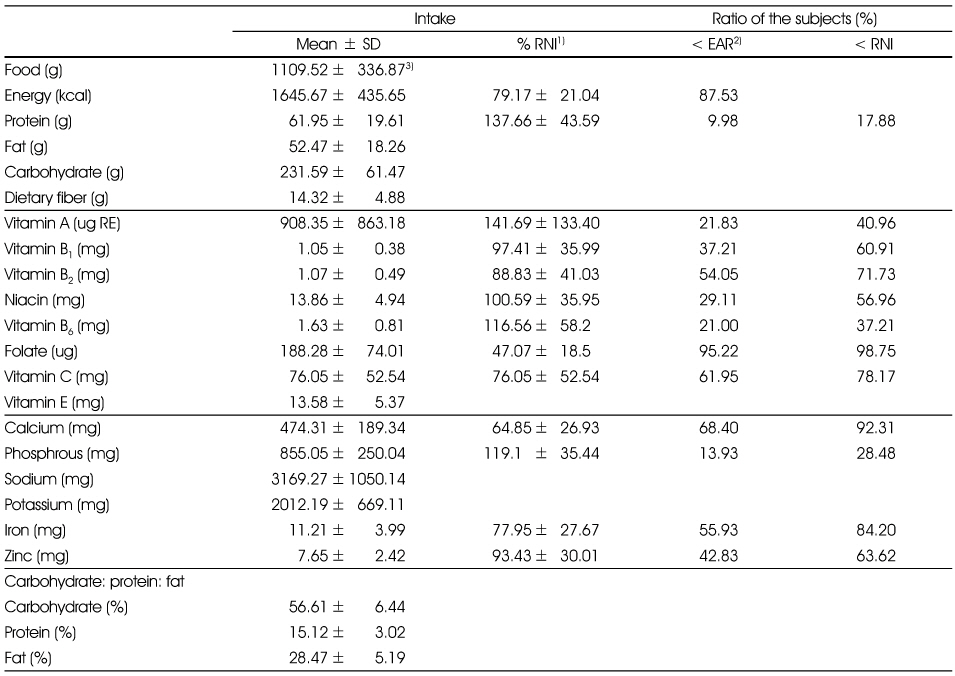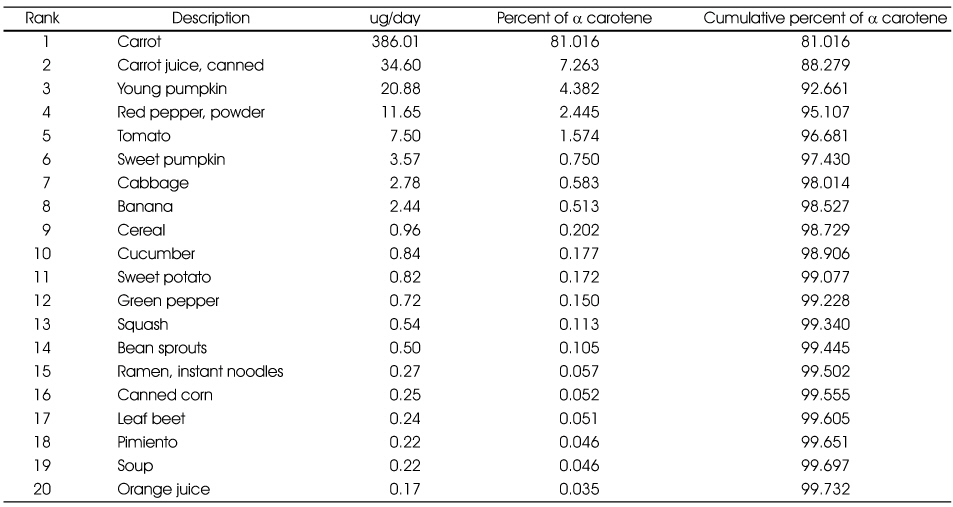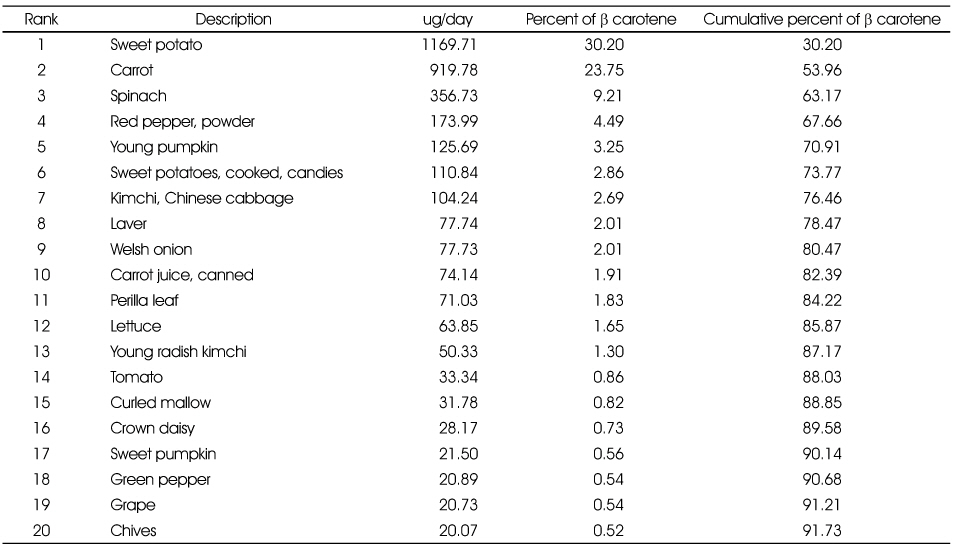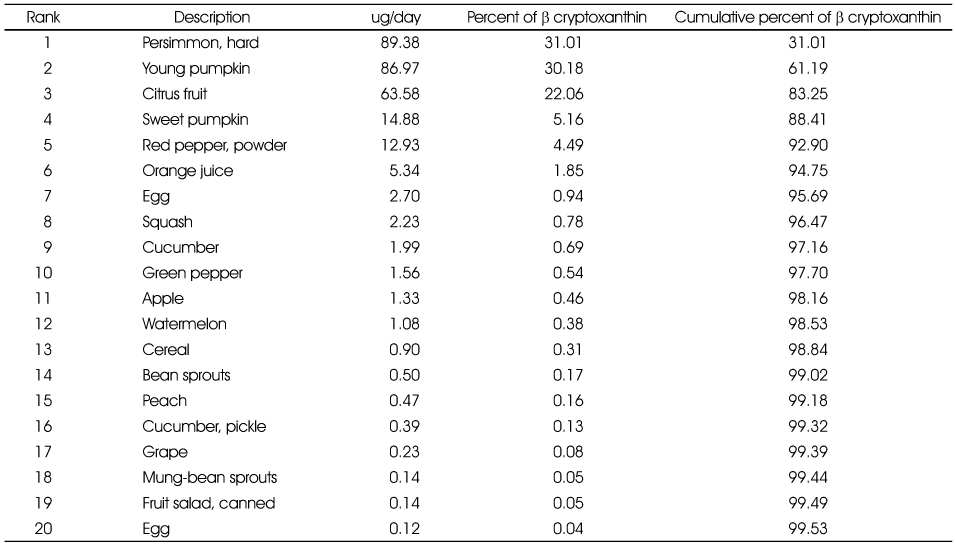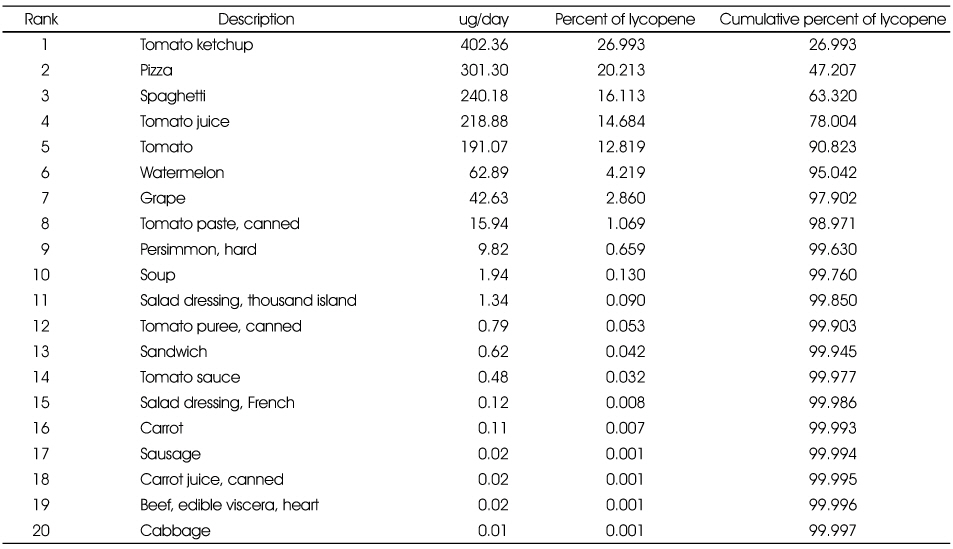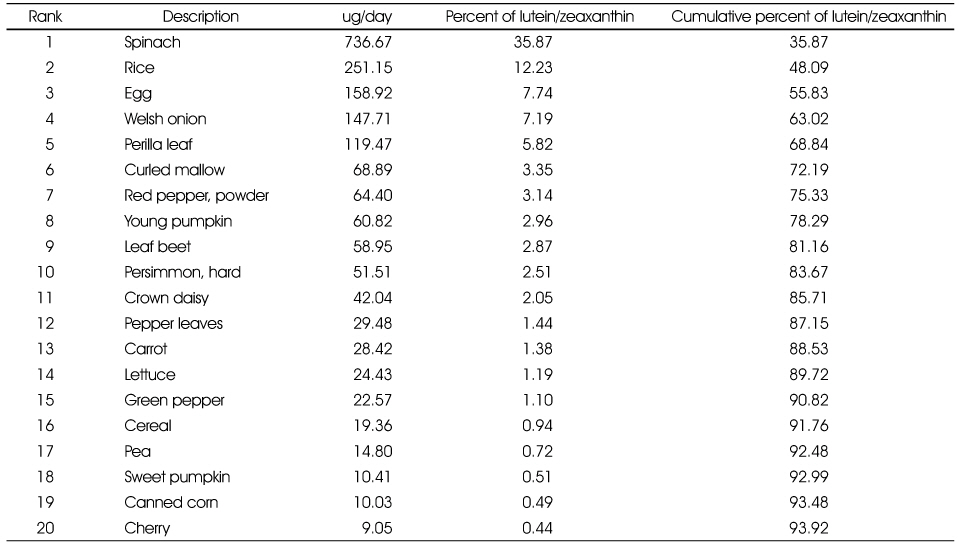References
1. Bae YJ, Kim EY, Yeon JY, Cho HK, Lee JS, Kim MH, Kim MH. Evaluation of dietary behavior, nutrient and food intake status, and dietary quality based on Diet Quality Index-International (DQI-I) in female university students. J East Asian Soc Diet Life 2010. 20(4)491–501.
2. Bae YJ, Kim MH. A study evaluating nutrient intake and diet quality in female college students according to coffee consumption. J Korean Diet Assoc 2009. 15(2)128–138.
3. Hiraoka M. Nutritional status of vitamin A, E, C, B1, B2, B6, nicotinic acid, B12, folate, and beta-carotene in young women. J Nutr Sci Vitaminol (Tokyo) 2001. 47(1)20–27.
4. Institute of Medicine, Food and Nutrition Board. Dietary Reference Intakes for Vitamin A, Vitamin K, Arsenic, Boron, Chromium, Copper, Iodine, Iron, Manganese, Molybdenum, Nickel, Silicon, Vanadium, and Zinc 2000. Washington DC: National Academy Press;
5. Kim HY. Influence of carotene supplementation on serum carotene and retinol levels in lacto-ovo-vegetarian and non-vegetarian women. Korean J Nutr 1989. 22(4)257–265.
6. Kim MH, Lee JC, Bae YJ, Cho HK, Kim MH, Kim EY, Hong WJ, Sung CJ. Nutritional status and diet quality of female college students by living together with or without parents. J East Asian Soc Diet Life 2006. 16(6)635–645.
7. Kim SH, Lee SH, Hwang YJ, Kim HY. Exposure assessment of vitamins and minerals from various sources of Koreans. Korean J Nutr 2006. 39(6)539–548.
8. Kimura N, Fukuwatari T, Sasaki R, Hayakawa F, Shibata K. Vitamin intake in Japanese women college students. J Nutr Sci Vitaminol (Tokyo) 2003. 49(3)149–155.
9. Kwon YS, Kim HS. Vitamin A nutritional status determined by assessing dietary intake and serum retinol level among elderly adults living in Asan. Korean J Hum Ecol 2004. 13(1)75–84.
10. Ministry of Health and Welfare. In-Depth Analysis on the 3rd (2005) Korea Health and Nutrition Examination Survey - Nutrition Survey - 2007.
11. Ministry of Health, Welfare and Family Affairs [MOHWFA]. Korea Center for Disease Control and Prevention [KCDCP]. 2009 National Health Statistics- The 4th Korea National Health and Nutrition Examination Survey, the second year (2009) 2010. Korea: Korea Center for Disease Control and Prevention;
12. Nagao A. Absorption and function of dietary carotenoids. Forum Nutr 2009. 6155–63.
13. Noh HH, Kim YN, Cho YO. Intakes and major food sources of vitamins A and E of Korean adults living in Seoul and Gyeonggi province. Korean J Nutr 2010. 43(6)628–637.
14. Oh HM, Yoon JY, Cho SH, Yoon JS. Vitamin A and vitamin E status of diabetic patients and normal adults in Korea. Korean J Nutr 2009. 42(4)318–326.
15. Paterson E, Gordon MH, Niwat C, George TW, Parr L, Waroonphan S, Lovegrove JA. Supplementation with fruit and vegetable soups and beverages increases plasma carotenoid concentrations but does not alter markers of oxidative stress or cardiovascular risk factors. J Nutr 2006. 136(11)2849–2855.
16. Research Institute of Food and Nutritional Sciences. Phytonutrient Contents in Vegetable/Fruits/Legumes 2009. Seoul: Yonsei University;
17. The Korean Nutrition Society. Dietary Reference Intakes for Koreans 2010. Seoul:
18. USDA National Nutrient Database for Standard Reference. U.S. Department of Agriculture, Agricultural Research Service 2010. cited 2011 April 04. Available from
http://www.ars.usda.gov/nutrientdata.
19. Wintergerst ES, Maggini S, Hornig DH. Contribution of selected vitamins and trace elements to immune function. Ann Nutr Metab 2007. 51(4)301–323.
20. Yeum KJ, Lee YC, Lee KY, Kim BS, Roh JK, Park KS. The serum levels of retinoids, β-carotene and α-tocopherol of cancer patients. J Korean Cancer Assoc 1992. 24(3)343–351.
21. Zhou BF, Stamler J, Dennis B, Moag-Stahlberg A, Okuda N, Robertson C, Zhao L, Chan Q, Elliott P. INTERMAP Research Group. Nutrient intakes of middle-aged men and women in China, Japan, United Kingdom, and United States in the late 1990s: the INTERMAP study. J Hum Hypertens 2003. 17(9)623–630.
